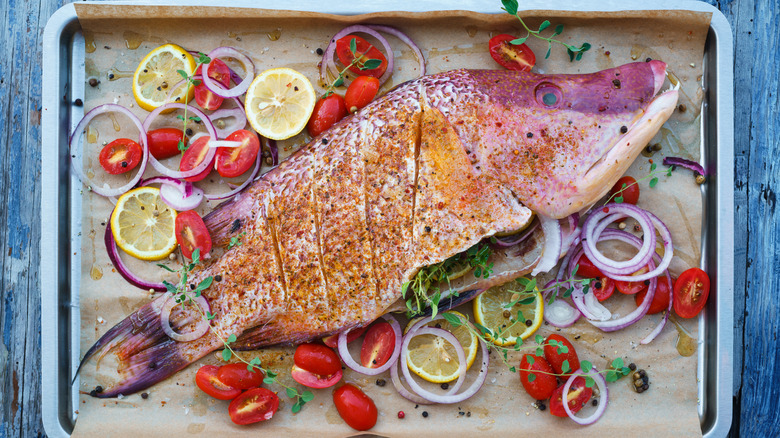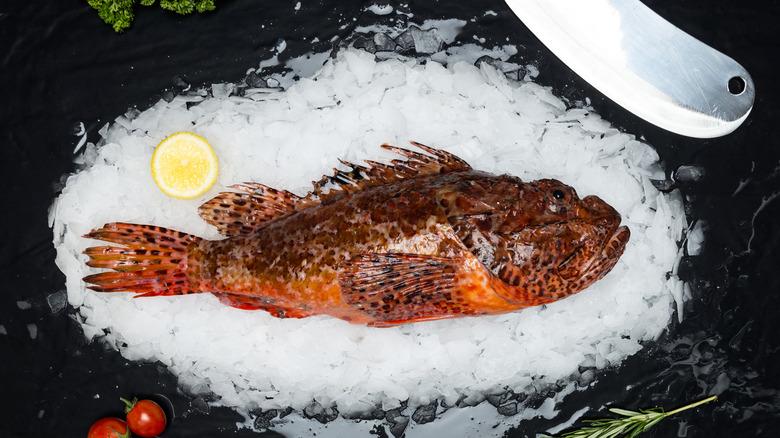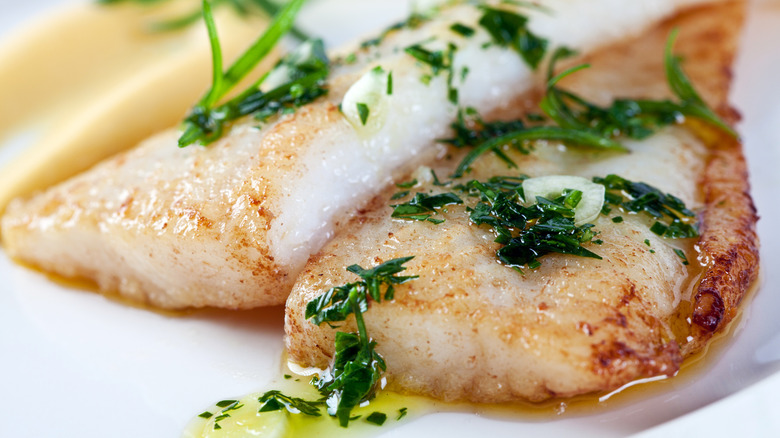What Is Hogfish And What Does It Taste Like?
A fresh fish prepared well dazzles — not only does it look incredible, but it delivers delicious flavors with little fuss. Of course, not every catch is created equal, with some exemplars offering a better culinary experience than others. But if you happen to come across a hogfish, get excited — it's as delicious as it gets.
Named for its pig-like snout, the hogfish (Lachnolaimus maximus) lives in the waters of the Gulf of Mexico and the Caribbean Sea. Its range encompasses an area from the Carolinas to the South American continent. It's popular in Caribbean cuisine, as well as in Florida, especially in the Keys. Beloved byfishermen, hogfish are usually caught recreationally above their natural reef habitat. However, large-scale commercial fishing is rare, and its rarely distributed outside of local restaurants and markets. So if you see some available, place an order, or bring some home. It'll enthrall — let's dive into why.
What does hogfish taste like?
So what's the fuss all about? Hogfish tastes sweet, mild, and buttery. It lacks any overly fishy notes, instead boasting a delicate scallop and lobster-like flavor. In fact, such a palette is caused by crustaceans comprising the hogfish's primary diet. Expect few off-notes, with a taste reminiscent of red snapper.
The texture is flakey, boasting even more distinct flakes than mahi mahi. Its delicate mouthfeel melts on the tongue and does well in a variety of cooking applications. Plus, with such a palette, it doesn't necessitate many aromatics. No surprise the fish is so popular in the regions it resides — so let's explore how to use it in the kitchen.
Such an appealing combination of texture and flavor has made hogfish a targeted catch of fishermen. As a result, it's been vulnerable to overfishing, with seasonal limits and restraints on commercial fishing. Before diving into a hogfish, make sure it's legally sourced, and at a good season — typically, it's fished for in the summer.
How to cook hogfish
Hogfish doesn't need complex techniques to showcase its best qualities. Most often, the fish is simply baked or grilled whole. Lemon is a frequent accompaniment, sliced and stuffed inside, as is butter, which highlights the succulent texture. Simple aromatics like salt, pepper, oregano, and Old Bay are also tasty accompaniments. When cooking with fillets, melt the butter with the seasonings to infuse the flesh. And for an extra crispy element, coat the exterior in bread crumbs.
Keep the cooking time to a short fifteen minutes in an oven at 350 Fahrenheit when using filleted fish; anything longer, and the resultant texture will become too chewy. When roasting an entire hogfish, the cooking duration should be similar, if not a bit shorter — just up the temperature of the oven. It's possible to tell hogfish is ready when the flesh is flakey and white.
Hogfish also works well in fried applications. Cover in cornmeal, flour, and paprika, and cook in hot oil for only a few minutes a side. The fillets make for incredibly juicy fish sandwiches. And for an even broader source of recipe inspiration, substitute into dishes calling for snapper — the two fish have a similar texture. Hogfish will make for a tasty ceviche, tacos, and more.


